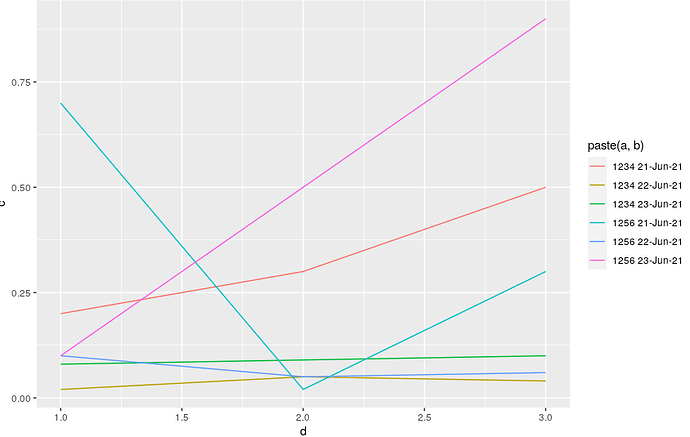Not sure how I can explain myself better so I produced a reprex to illustrate what I am trying to solve. Do not bother trying to understand what the data means.
What I want is just to plot d vs c and group them by a. In other words I want to color all the results which belong to container "1234" in red and the results from "1256" in blue. I need to colour=paste(a,b))) because other wise if I do colour = a it would group different experiments conduced on different days together. So instead of having 6 different colour I need to plot 6 data set with two different colors the colour being determined by a
a <- c("1234","1234","1234","1234","1234","1234","1234","1234","1234","1256","1256","1256","1256","1256","1256","1256","1256","1256")
b <- c("21-Jun-21","21-Jun-21","21-Jun-21","22-Jun-21","22-Jun-21","22-Jun-21","23-Jun-21","23-Jun-21","23-Jun-21","21-Jun-21","21-Jun-21","21-Jun-21","22-Jun-21","22-Jun-21","22-Jun-21","23-Jun-21","23-Jun-21","23-Jun-21")
c <- c(0.2,0.3,0.5,0.02,0.05,0.04,0.08,0.09,0.1,0.7,0.02,0.3,0.1,0.05,0.06,0.1,0.5,0.9)
d <- c(1,2,3,1,2,3,1,2,3,1,2,3,1,2,3,1,2,3)
df <- data.frame(a,b,c,d)
ggplot(data=df, aes(x=d, y=c, colour=paste(a,b))) + geom_line()
which produces this plot


